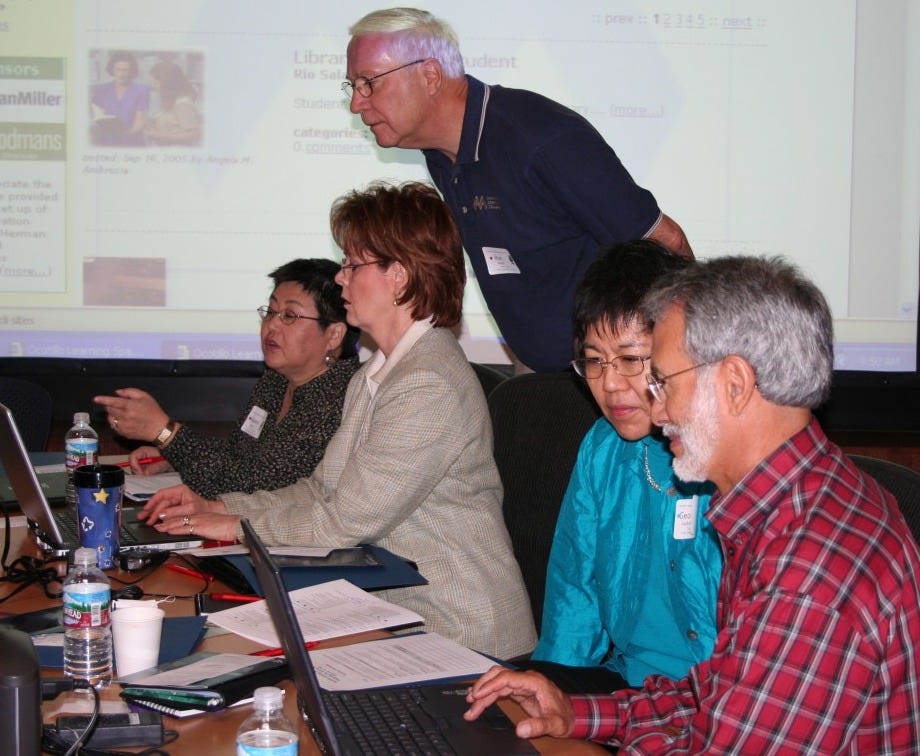Sci-Ed Update 342
Don't anticipate obedience, finding courage, obesity increase in children, taking notes, age reversal, nonhormonal male contraception, proper order of anatomy & physiology topics, tattoo biology
Where does tattoo ink go in your body? There’s one particular spot.
Tattoos are no longer taboo. One in every three Americans now has at least one tattoo. As getting inked becomes more common, potential risks and side effects are being more intensely scrutinized. Last year, a series of worrisome headlines suggested a link between tattoos and lymphoma. These scare stories were based on a study of 1,400 people with lymphoma and a control group of over 4,000 people without cancer.
This study’s authors claimed that their study showed that getting a tattoo increased risk, but their data actually suggested that any differences were not statistically significant. If tattoo ink did cause cancer, you’d expect people who had more of their body tattooed to be at greater risk. Crucially, the authors did not find this. Even if the data were more convincing, the study’s format makes it impossible to tell whether any link is causal–there could be factors that make people more likely to get lymphoma and tattoos.
These health risks were overblown, but the study got me thinking about tattoo ink–where does it go in our skin, and does it stay there?
Read more→ AandP.info/9310f3
Want to Retain Information Better? Try This Popular, 70-Year-Old Note-Taking Method
Anyone who has ever attended a keynote, lecture, or presentation of any kind knows how important it is to take good notes. How many times have you been at a presentation for work and afterward wished you had written down that key idea that you somehow can’t remember?
A while back, in my corporate days, I was experiencing this far too often. So I went back to my college days and pulled out a note-taking method I used to use, one of the most popular note-taking methods of all time, the “Cornell Note-taking System.” It’s named after a Cornell University educator who invented the system in the 1940s. Here’s how it works, as explained on the Cornell System official website.
Read more→ AandP.info/df5c99
Inside the scientific quest to reverse human aging
For those hoping to cure death, and they are legion, a 2016 experiment at the Salk Institute for Biological Studies in San Diego has become liminal — the moment that changed everything. The experiment involved mice born to live fast and die young, bred with a rodent version of progeria, a condition that causes premature aging. Left alone, the animals grow gray and frail and then die about seven months later, compared to a lifespan of about two years for typical lab mice.
But the Salk scientists had a plan to change the aging animals’ fate. They injected them with a virus carrying four genes that can reshape DNA and, in effect, make every cell in the rodents’ bodies young again. The scientists could even control the genes from outside the mice, turning them on and off to manage the safety and potency of the genetic changes.
The experiment worked: The animals lived 30 percent longer afterward, a marked improvement, if not quite a normal mouse lifespan.
And, with that, the longevity gold rush entered a new era. Tech titans and venture capitalists started throwing billions of dollars at labs exploring the technique, called cellular reprogramming. Experiments began on other mice, as well as worms and monkeys.
Read more→ AandP.info/d2534e
Towards a Male Contraceptive That Doesn’t Target Hormones

Unintended pregnancies may present a pleasant surprise to some, while to others they can impose a significant emotional, physical, and financial burden. They are also a major cause of the roughly 70 million abortions that occur annually worldwide.1
Contraceptive measures—hormonal pills, intrauterine devices, female condoms, spermicide, intravaginal rings—have mostly only been for women. Men, on the other hand, have limited options.
To counter this disparity, scientists led by Martin Matzuk, a pathologist at the Baylor College of Medicine, investigated a potential contraceptive for men.2 In their study, published in Science, they demonstrated how an inhibitor of serine/threonine kinase 33 (STK33)— an enzyme involved in sperm formation—could serve as a promising non-hormonal candidate for birth control in males. This inhibitor was potent at low concentrations, non-toxic, and reversibly inhibited STK33 without altering the size of testes. Their findings present a potential option to develop a male contraceptive in the future to help distribute the biological burden of avoiding pregnancies between both sexes.
Read more→ AandP.info/c2a3a2
The Proper Order of Topics in A&P | Leaderboards | Student Frustration
Ever wonder why topics in A&P seem to have a uniform order of topics in all the courses & textbooks? Host Kevin Patton discusses the proper order of those concepts. We continue the discussion of gamification, including a focus on leaderboards. And we tackle why pandemic learning causes students to lament that they have to teach themselves.
00:00 | Quotation & Intro
00:44 | More on Gamification
06:20 | Sponsored by AAA
07:38 | Leaderboard Competition
16:02 | Sponsored by HAPI
17:16 | Pandemic Feelings of Learning
25:12 | Sponsored by HAPS
26:16 | Order of A&P Topics
35:27 | TAPP Community
36:03 | The Proper Order?
41:18 | Staying Connected
To listen to this episode, click on the play button above ⏵ (if present) or this link→ theAPprofessor.org/podcast-episode-88.html
Against Anticipatory Obedience
As Donald Trump assumes the presidency for a second time, the outlook for higher education is dire. The new administration’s agenda for higher education has been thoroughly prepared by a series of statewide legal assaults on public colleges and universities in North Carolina, Florida, Texas, and elsewhere, as well as by the high-profile congressional witch hunt that within the past year brought down the presidents of three Ivy League institutions.1
How should we respond? The University of Chicago’s 1967 Kalven Report, often cited as the source of calls for “institutional neutrality,” declares, “From time to time instances will arise in which the society, or segments of it, threaten the very mission of the university and its values of free inquiry. In such a crisis, it becomes the obligation of the university as an institution to oppose such measures and actively to defend its interests and its values.”2 This is undoubtedly such a time.
Read more→ AandP.info/9b6d1f
Six Ways to Find Your Courage During Challenging Times
“We teach who we are,” says educational philosopher Parker Palmer.
Early in my teaching career, I participated in a series of retreats led by the Center for Courage and Renewal, inspired by Palmer’s book The Courage to Teach. Palmer reminds us that our sense of self plays out in our work every day—and living with courage and integrity means finding balance and alignment between our inner and outer selves. In other words, our identities, values, and beliefs inform the selves we bring to others.
But how do we find the courage to stand up for our coworkers, students, neighbors, family and friends, and ourselves amid exhausting and unprecedented challenges? The truth is, I’m not particularly thrilled with the person I’ve been bringing to work lately. On some mornings, I’m simply looking for the courage to get out of bed.
If you are like me, there are days when you feel emotionally weary, inept, and cynical—all characteristics of burnout. However, I’m finding that the science of courage offers a psychological lifeline, helping us to clarify what really matters so that we can find a steadier, values-based resolve—and even inspire it in others. I dove into the courage research with teachers in mind, but these tips are for everyone.
Read more→ AandP.info/a0ab23
Over Half of Adults, a Third of Kids Globally Will Have Overweight, Obesity by 2050
By 2050, over half of adults and a third of youth are projected to have overweight or obesity.
Since 1990, rates of obesity increased by 155% in men, 105% in women, and 244% in children and adolescents.
According to the researchers, adult obesity is closely linked to childhood obesity.
Read more→ AandP.info/cc67a1








